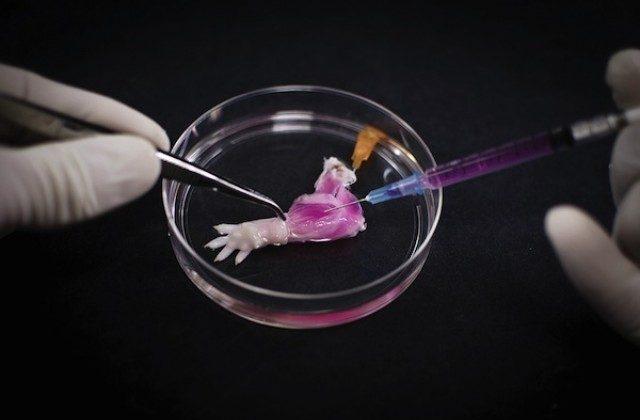Scientists at the Massachusetts General Hospital successfully grew semi-functioning rat limbs—they circulate blood, and respond to stimuli—in a lab for the first time. Growing human limbs, which are more complex, are still a faraway, but eventual, goal for researchers.
The researchers used a technique known as “decel/recel,” short for decellularization and recellularization, an established method for growing organs like hearts and kidneys. Limbs are more difficult to grow because it involves different types of cells, and required a more complex process.
To grow the limb, researchers took a detached rat limb and purged it of living cells with a detergent solution, leaving only the blood vessels and nerve matrix, a process makes it less likely for the new cells to be rejected by the limb.
The resulting muscle fibers were stimulated with electricity, which caused them to contract at 80 percent of the strength level of new-born rats. When the limbs to attached to a recipient animals, the blood quickly circulated throughout the limb, and researchers hope that the nerves will regrow as well. The rats have not yet moved their new limbs.
“In clinical limb transplantation, nerves do grow back into the graft, enabling both motion and sensation, and we have learned that this process is largely guided by the nerve matrix within the graft,” Harald Ott, a doctor at the hospital’s Department of Surgery, said in a press release.
“Additional next steps will be replicating our success in muscle regeneration with human cells and expanding that to other tissue types, such as bone, cartilage and connective tissue.”






Friends Read Free